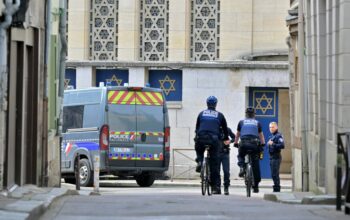
Can you run out of space in space? When it comes to SpaceX’s proposed launch of 30,000 additional Starlink internet low-earth orbit satellites, NASA believes it’s at least a possibility.
In a recent letter to the FCC, NASA officials expressed concern that the constellation, a fleet of low-earth orbit satellites intended for a second-generation Starlink service (not to be confused with the Starlink Premium internet plan), will instigate a “significant increase in the frequency of conjunction events and possible impacts to NASA’s science and human spaceflight missions.” The letter addresses a few concerns, namely that the satellites could disrupt missions to the International Space Station, interfere with certain radio frequencies or even collide with other spacecraft.
Raising the risk of collision
Starlink satellites are equipped with automatic collision-avoidance propulsion systems, and, other than losing a number of satellites to a geometric storm, SpaceX hasn’t reported any major issues after launching its 2,000th satellite. But it’s the sheer number of satellites — which would double the number of tracked objects in low orbit — and whether or not SpaceX will be able to successfully scale its anticollision technology to such a large fleet, that has NASA concerned.
NASA acknowledges that there is effectively zero collision probability on any single auto-maneuverable spacecraft, but states that a significantly larger fleet, all controlled by the same system, poses the potential to raise that risk from zero.
NASA contends that “with the potential for multiple constellations with thousands and tens of thousands of spacecraft, it is not recommended to assume propulsion systems, ground detection systems and software are 100% reliable, or that manual operation (if any) are 100% error-free.” Consequently, NASA does recommend that SpaceX conduct a risk assessment to “provide confidence that the situation could be sufficiently addressed,” and that it be permitted to review the assessment once it is complete.
Or just getting in the way
Even if SpaceX can guarantee zero risk of collisions with other spacecraft to NASA’s satisfaction, there’s still the possibility of “potential impacts on science missions” and radio frequency interference.
Roughly 10,000 of the proposed Starlink satellites are “in or above the orbital range of Hubble,” which could double the rate of satellite interference the Hubble telescope already encounters, NASA says. Furthermore, these satellites will orbit between the earth and the International Space Station, which could interfere with launch windows and make things tricky when attempting to send or receive parcels to and from the ISS.
So, even if the Starlink satellites aren’t colliding with anything, they still could interfere with other NASA missions. There also seems to be a slight concern over radio frequency interference, but NASA acknowledged ongoing cooperation between it, SpaceX and the FCC, requesting the “FCC to support these conditions and to continue coordination of SpaceX operations in compliance with existing processes.”
NASA did not request SpaceX rescind its application to the FCC to launch the Gen2 constellation, but rather, that it conduct the proper testing (and share the results) to quell any major concerns. SpaceX did not immediately respond to a request for comment, but we’ll keep you updated on the company’s response — and what it could mean for the future of its satellite internet service, Starlink.



